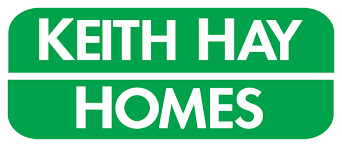Over the course of 2022, we’ve seen a buyer’s market emerge, with listings up, sales volumes down, and property values falling. Admittedly, new buyers (or those refinancing) have to clear quite a few lending hurdles first – but once their finance has been approved, conditions are in their favour. What might lie ahead in 2023?
In my view, the general outlook for the housing market remains weak, especially in light of the Reserve Bank’s predictions that the economy will enter a recession in 2023, inflation won’t start to ease until the second half of next year, the official cash rate (OCR) will rise to 5.5%, and that the unemployment rate will increase. A higher unemployment rate and the risk that typical mortgage rates rise above 7% can create a tricky situation for the property market.
However, there are some caveats to note. Most importantly, at least for now, there doesn’t seem to be a major risk of large-scale job losses. Indeed, the rise in the unemployment rate in 2023 could be more about a larger labour force. Of course, being new (or returning) to the jobs market and unable to find a position won’t do much for borrowing ability or house-buying demand. But at least for those already in a job, this should be a buffer against financial stress.
There is also a risk that the previous increases in the OCR could hit suddenly and significantly in the early months of 2023, which might remove the need to tighten monetary policy as much as is currently anticipated. Of course, there’s no free lunch. That scenario might well involve a lower peak for mortgage rates, but it may also mean a weaker labour market and more job cuts.
So how might all of this play out in the property market? For the calendar year as a whole, with GDP soft and mortgage rates higher (albeit perhaps offset to some degree by rising net migration and increased wages), it’s hard to see property sales volumes climbing too much in 2023 – a total of between 65,000 and 70,000 is on the cards again. As per the Reserve Bank’s forecasts, it also seems plausible that property values could drop another 10% or so, taking the total fall to about 20%.
However, picking up on the ‘year of two halves’ analogy, the weakness for volumes and values may not necessarily apply right throughout 2023. Indeed, if the signs become clear that mortgage rates have peaked by the middle of next year, this could create a bit more buyer positivity and hints of rising sales volumes towards the end of 2023. In turn, this would tend to bring price falls to an end. The Reserve Bank may have a split focus next year too – quelling inflation early in the piece and then trying to limit the scale of a recession thereafter.
The Election also looms large in the latter stages of 2023. Some existing and would-be investors will no doubt be hoping for a National win and the reinstatement of interest deductibility. However, it’s also worth keeping in mind that the Election is still a long way away, and the track record of new Governments fully/quickly reversing previous tax changes isn’t that strong.
Overall, the economy and property market will face significant challenges in 2023, and, as has been the case in 2022, the labour market may well hold a big key. If large-scale job losses can be avoided, the falls in property values will probably remain ‘orderly’ and could come to an end in the year’s second half. But pessimism would take over if employment did start to fall more sharply. Of course, for savvy investors, this may present opportunities.
All the best for 2023.

Kelvin Davidson
Kelvin Davidson is the Chief Economist of CoreLogic New Zealand.















Add Comment